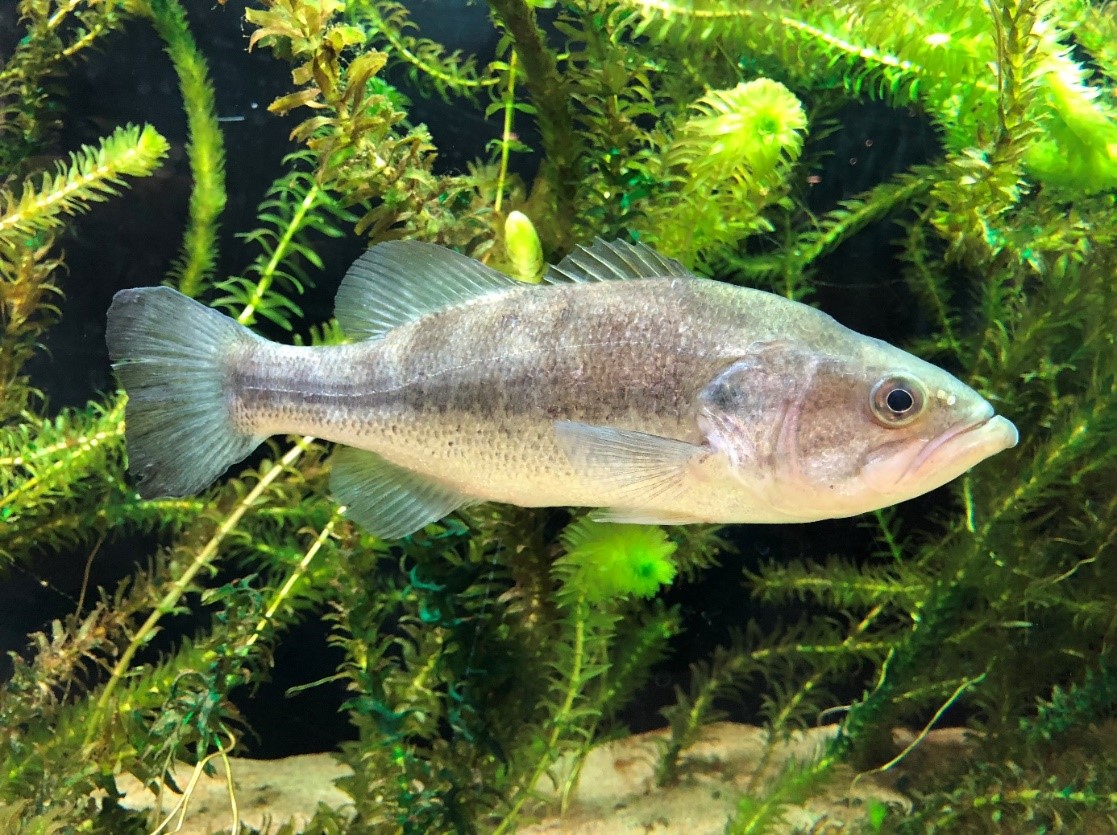
Newsroom
Invasive Species Should Look Like Natives...But Not Too Much

The black bass (Micropterus Salmoides), a fish native to the eastern United States but considered invasive in the western part of the USA, as well as in many countries around the world. (Copyright Totti; CC-BY-SA-4.0)
Biological invasions, along with pollution, habitat fragmentation, overexploitation and climate change, represent one of the major causes of biodiversity changes worldwide. It remains difficult to determine which species could become invasive and why these species will establish themselves more easily in one environment than another.
For more than half a century, a lot of work has been done on this issue, yet predicting the invasion potential of species is still a particularly hazardous task. This uncertainty probably resides in the fact that the invasion capacities of species can be explained not only by the functional characteristics of these species - reproductive capacities, feeding, and body size, but also by those of the native species constituting the invaded communities.
Recently, an international collaborative research team led by Prof. SU Guohuan from the Institute of Hydrobiology (IHB) of the Chinese Academy of Sciences revealed the invasion mechanisms of freshwater fish via a trait-based analysis on the North American freshwater fish fauna. This study was published in Nature Communications.
Using an open-access comprehensive database from the U.S. that contains data from more than 1,800 fish communities, primarily in rivers across North America, the researchers studied the immigration of invasive fish species into river ecosystems from two different perspectives.
First, the researchers analyzed what morphological and physiological characteristics or behavioral traits are exhibited by the non-native species that have found a niche in an existing species community in an ecosystem. Examples of these include the size of the species, estimates of reproduction, diet, salt and temperature tolerance, or the care of their own offspring. Second, they explored how permeable an existing fish community is so that a new fish species can establish itself there.
The results showed that the most frequently encountered non-native species in these ca. 1800 rivers are not only those most attractive to humans, but are also those with particular ecological characteristics, such as high fecundity, long life span and large body size.
However, this is not sufficient to predict the invasion success of these species. The introduced species that are most likely to establish in a new environment must both have functional characteristics similar to those of the native community, which ensures good compatibility with the local habitat, and functions that are not redundant with those of the native species, thus avoiding direct competition with the native fauna.
Therefore, the researchers demonstrated that, in a given environment, the more functionally distant the native species are from each other, the more vulnerable this environment will be to invasion by non-native species that will use these vacant spaces.
These results have a particular resonance in a context of global erosion of biodiversity, since the extinction of native species is likely to free up functional niches that will make environments all the more vulnerable to biological invasions, which could ultimately accelerate the current decline in biodiversity.
(Editor: MA Yun)